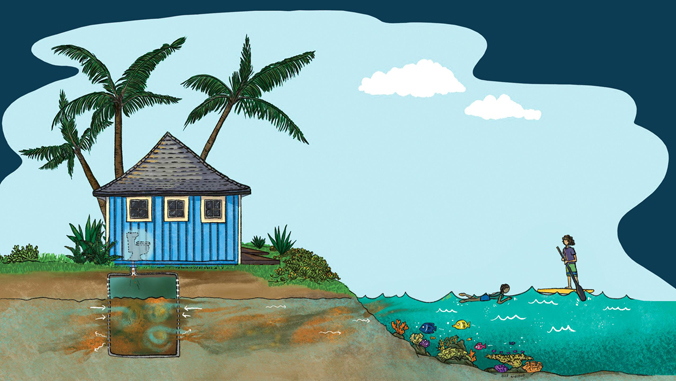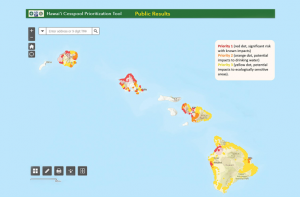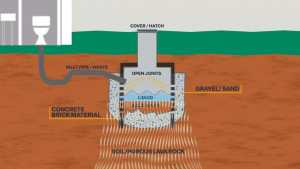
A user-friendly webpage to help homeowners and policymakers address the critical issues surrounding Hawaiʻi’s estimated 83,000 cesspools is now publicly available.
The webpage is the product of a collaboration between the University of Hawaiʻi Sea Grant College Program (Hawaiʻi Sea Grant), UH Water Resources Research Center (WRRC) and the Hawaiʻi State Department of Health (DOH) Wastewater Branch.

A suite of free resources is available on the page, including the Hawaiʻi Cesspool Prioritization Tool (HCPT), an interactive map-based tool that displays each cesspool’s prioritization level and indicates the urgency of conversion based on geographic location. This is essential information for homeowners because Act 125 Session Laws of Hawaiʻi (2017) requires all of the state’s cesspools to be upgraded, converted or connected to sewer before 2050.
Christopher Shuler, a hydrologist and researcher with WRRC, led the tool’s creation. He said, “We were privileged to receive so many essential contributions from an incredible array of scientists, wastewater experts and a number of students that allowed us to explore every angle we could as we sought to make the HCPT a comprehensive, yet easy-to-use tool.”
Essential resource
HCPT is an essential resource for coastal communities and policymakers statewide. DOH will use HCPT to plan for the conversion of cesspools and in the distribution of funding assistance to homeowners. Homeowners have the ability to input their tax map key or physical address to determine the conversion priority level from one to three based on their location. Members of the community who do not have a cesspool can also use the tool to visualize the scale and effects of untreated sewage discharges occurring in neighboring areas.

“Upgrading Hawaiʻi’s cesspools to modern and effective forms of wastewater treatment is one of the state’s most critical priorities, especially with climate change and sea-level rise intensifying in the coming years,” said Melanie Lander, Hawaiʻi Sea Grant community planning and design extension agent, who led the project’s outreach efforts. “Our educational materials focus on informing Hawaiʻi’s communities about the human health and ecosystem risks that cesspools pose.”
In addition, the website offers a series of place-based videos explaining what cesspools are and why some have particularly acute and hazardous impacts on human and ecosystem health, and step-by-step instructions on how to use the prioritization tool. It also includes helpful links and resources including the 2022 report, “Hawaiʻi Cesspool Hazard Assessment & Prioritization Tool,” which details the process of creating HCPT.
Darren T. Lerner, director of Hawaiʻi Sea Grant and a member of the Cesspool Conversion Working Group, said, “We worked closely with experts from the state and departments throughout the University of Hawaiʻi at Mānoa for several years to develop the prioritization tool, and are so proud to share the information with the community and with policymakers now. This website truly has something for everyone.”
For more information, contact Shuler at cshuler@hawaii.edu. To discuss educational opportunities and outreach products, contact Lander at mlander@hawaii.edu.
The project was funded by the Hawaiʻi State DOH Wastewater Branch.
–By Cindy Knapman

